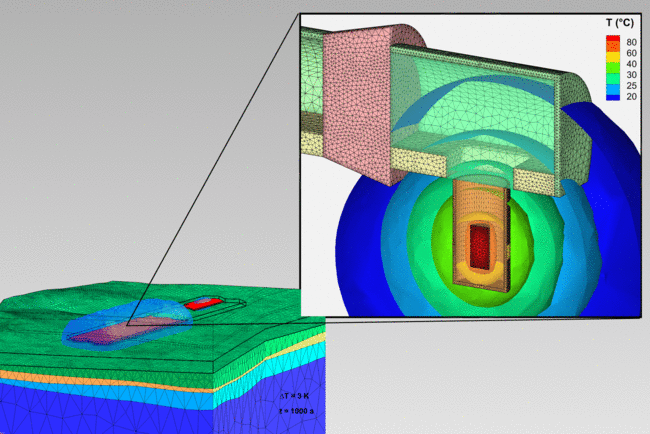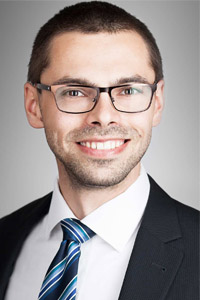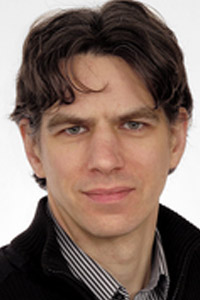BGR#UFZ#TUBAF Collaboration
Multi-physics simulation for geotechnical systems analysis

Image: Dr. Jobst Maßmann (BGR), Dr. Gesa Ziefle (BGR), Dr. Thomas Nagel.
The usage of the geological subsurface is increasing considerably in its intensity. Major associated requirements result from the exploitation of renewable as well as conventionally and unconventionally harvested traditional energy carriers, the short and long-term storage of energy carriers and energy as well as the deposition of by- or endproducts of the energy supply system. This increasing and sometimes competing use of the subsurface cause usage conflicts and raises questions regarding the technical safety, the associated environmental impact as well as societal acceptance.
The detection, description and assessment of anthropogenic intervention into the terrestrial environment, especially the geological subsurface, require competencies from the environmental, engineering and earth sciences as well as from geotechnics. This extends in particular to one of the central challenges society as a whole faces this century—the search, construction and operation of a repository to host nuclear waste with the best-possible safety.
This research is part of the OpenGeoSys initiative (www.opengeosys.org).
It is our mission to significantly contribute to the accomplishment of this challenge by providing and applying modern numerical modelling platforms as an indispensable commodity for geotechnical system and safety analyses. To profit from and further develop the mutual expertise in this area, the Federal Institute for Geosciences and Natural Resources (BGR) and the Helmholtz Centre for Environmental Research (UFZ) have established this joint work group fostering the scientific exchange. Its aims are the promotion and intensification of thematic and methodological synergies for the development and application of simulation-based methods in the geotechnical context described above.
The specific strength of our group is the modelling and numerical simulation of coupled multiphysical processes in the geological subsurface. For this purpose, the modelling platform OpenGeoSys (www.opengeosys.org) is primarily developed, extended and used in applications. We support the development of methods and software engineering with the aim of a more advanced process and system understanding as well as the provision of dedicated analysis frameworks suitable for the search, assessment and design of a geological nuclear waste repository.
We maintain an active exchange on fundamental methods suitable for both host rock-independent and host rock-specific approaches which can be the foundation for the assessment of others of the above mentioned applications in the context of anthropogenic intervention in the geological subsurface.
The quality and relevance of the methods and their implementation into OpenGeoSys is continuously assured by the integration of our group in the scientific community and the participation in international benchmarking initiatives.
Workgroup leaders and contacts:
 Dr. Thomas Nagel
Dr. Thomas Nagel
 Dr. Jobst Maßmann
Dr. Jobst Maßmann
